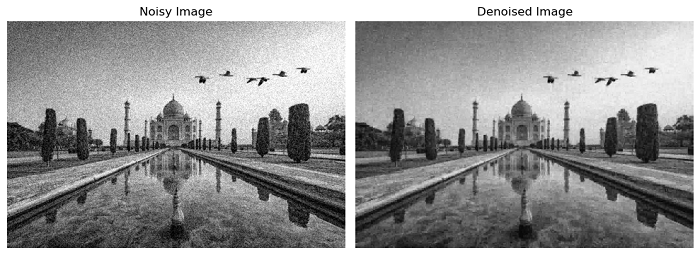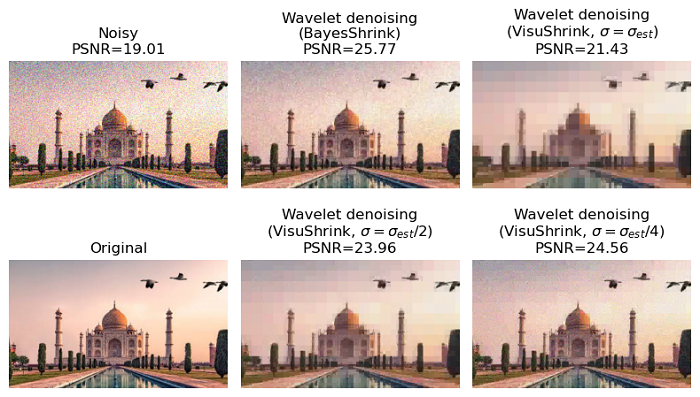
- Scikit Image – Introduction
- Scikit Image - Image Processing
- Scikit Image - Numpy Images
- Scikit Image - Image datatypes
- Scikit Image - Using Plugins
- Scikit Image - Image Handlings
- Scikit Image - Reading Images
- Scikit Image - Writing Images
- Scikit Image - Displaying Images
- Scikit Image - Image Collections
- Scikit Image - Image Stack
- Scikit Image - Multi Image
- Scikit Image - Data Visualization
- Scikit Image - Using Matplotlib
- Scikit Image - Using Ploty
- Scikit Image - Using Mayavi
- Scikit Image - Using Napari
- Scikit Image - Color Manipulation
- Scikit Image - Alpha Channel
- Scikit Image - Conversion b/w Color & Gray Values
- Scikit Image - Conversion b/w RGB & HSV
- Scikit Image - Conversion to CIE-LAB Color Space
- Scikit Image - Conversion from CIE-LAB Color Space
- Scikit Image - Conversion to luv Color Space
- Scikit Image - Conversion from luv Color Space
- Scikit Image - Image Inversion
- Scikit Image - Painting Images with Labels
- Scikit Image - Contrast & Exposure
- Scikit Image - Contrast
- Scikit Image - Contrast enhancement
- Scikit Image - Exposure
- Scikit Image - Histogram Matching
- Scikit Image - Histogram Equalization
- Scikit Image - Local Histogram Equalization
- Scikit Image - Tinting gray-scale images
- Scikit Image - Image Transformation
- Scikit Image - Scaling an image
- Scikit Image - Rotating an Image
- Scikit Image - Warping an Image
- Scikit Image - Affine Transform
- Scikit Image - Piecewise Affine Transform
- Scikit Image - ProjectiveTransform
- Scikit Image - EuclideanTransform
- Scikit Image - Radon Transform
- Scikit Image - Line Hough Transform
- Scikit Image - Probabilistic Hough Transform
- Scikit Image - Circular Hough Transforms
- Scikit Image - Elliptical Hough Transforms
- Scikit Image - Polynomial Transform
- Scikit Image - Image Pyramids
- Scikit Image - Pyramid Gaussian Transform
- Scikit Image - Pyramid Laplacian Transform
- Scikit Image - Swirl Transform
- Scikit Image - Morphological Operations
- Scikit Image - Erosion
- Scikit Image - Dilation
- Scikit Image - Black & White Tophat Morphologies
- Scikit Image - Convex Hull
- Scikit Image - Generating footprints
- Scikit Image - Isotopic Dilation & Erosion
- Scikit Image - Isotopic Closing & Opening of an Image
- Scikit Image - Skelitonizing an Image
- Scikit Image - Morphological Thinning
- Scikit Image - Masking an image
- Scikit Image - Area Closing & Opening of an Image
- Scikit Image - Diameter Closing & Opening of an Image
- Scikit Image - Morphological reconstruction of an Image
- Scikit Image - Finding local Maxima
- Scikit Image - Finding local Minima
- Scikit Image - Removing Small Holes from an Image
- Scikit Image - Removing Small Objects from an Image
- Scikit Image - Filters
- Scikit Image - Image Filters
- Scikit Image - Median Filter
- Scikit Image - Mean Filters
- Scikit Image - Morphological gray-level Filters
- Scikit Image - Gabor Filter
- Scikit Image - Gaussian Filter
- Scikit Image - Butterworth Filter
- Scikit Image - Frangi Filter
- Scikit Image - Hessian Filter
- Scikit Image - Meijering Neuriteness Filter
- Scikit Image - Sato Filter
- Scikit Image - Sobel Filter
- Scikit Image - Farid Filter
- Scikit Image - Scharr Filter
- Scikit Image - Unsharp Mask Filter
- Scikit Image - Roberts Cross Operator
- Scikit Image - Lapalace Operator
- Scikit Image - Window Functions With Images
- Scikit Image - Thresholding
- Scikit Image - Applying Threshold
- Scikit Image - Otsu Thresholding
- Scikit Image - Local thresholding
- Scikit Image - Hysteresis Thresholding
- Scikit Image - Li thresholding
- Scikit Image - Multi-Otsu Thresholding
- Scikit Image - Niblack and Sauvola Thresholding
- Scikit Image - Restoring Images
- Scikit Image - Rolling-ball Algorithm
- Scikit Image - Denoising an Image
- Scikit Image - Wavelet Denoising
- Scikit Image - Non-local means denoising for preserving textures
- Scikit Image - Calibrating Denoisers Using J-Invariance
- Scikit Image - Total Variation Denoising
- Scikit Image - Shift-invariant wavelet denoising
- Scikit Image - Image Deconvolution
- Scikit Image - Richardson-Lucy Deconvolution
- Scikit Image - Recover the original from a wrapped phase image
- Scikit Image - Image Inpainting
- Scikit Image - Registering Images
- Scikit Image - Image Registration
- Scikit Image - Masked Normalized Cross-Correlation
- Scikit Image - Registration using optical flow
- Scikit Image - Assemble images with simple image stitching
- Scikit Image - Registration using Polar and Log-Polar
- Scikit Image - Feature Detection
- Scikit Image - Dense DAISY Feature Description
- Scikit Image - Histogram of Oriented Gradients
- Scikit Image - Template Matching
- Scikit Image - CENSURE Feature Detector
- Scikit Image - BRIEF Binary Descriptor
- Scikit Image - SIFT Feature Detector and Descriptor Extractor
- Scikit Image - GLCM Texture Features
- Scikit Image - Shape Index
- Scikit Image - Sliding Window Histogram
- Scikit Image - Finding Contour
- Scikit Image - Texture Classification Using Local Binary Pattern
- Scikit Image - Texture Classification Using Multi-Block Local Binary Pattern
- Scikit Image - Active Contour Model
- Scikit Image - Canny Edge Detection
- Scikit Image - Marching Cubes
- Scikit Image - Foerstner Corner Detection
- Scikit Image - Harris Corner Detection
- Scikit Image - Extracting FAST Corners
- Scikit Image - Shi-Tomasi Corner Detection
- Scikit Image - Haar Like Feature Detection
- Scikit Image - Haar Feature detection of coordinates
- Scikit Image - Hessian matrix
- Scikit Image - ORB feature Detection
- Scikit Image - Additional Concepts
- Scikit Image - Render text onto an image
- Scikit Image - Face detection using a cascade classifier
- Scikit Image - Face classification using Haar-like feature descriptor
- Scikit Image - Visual image comparison
- Scikit Image - Exploring Region Properties With Pandas
Scikit Image - Wavelet Denoising
Wavelet denoising is a powerful technique for removing noise from images while preserving important image details. This technique is relies on the wavelet representation of an image. Gaussian noise in images is often characterized by small values in the wavelet domain. To remove this noise, wavelet denoising involves one of two main approaches −
Hard Thresholding: This approach sets wavelet coefficients below a certain threshold to zero.
Soft Thresholding: In soft thresholding, all wavelet coefficients are shrunk towards zero by a certain amount.
The scikit-image library provides a function within its restoration module that allows you to perform wavelet denoising on images. The function is called denoise_wavelet().
Using the skimage.restoration.denoise_wavelet() function
The restoration.denoise_wavelet() function is used to perform wavelet denoising on an image.
Syntax
Following is the syntax of this function −
skimage.restoration.denoise_wavelet(image, sigma=None, wavelet='db1', mode='soft', wavelet_levels=None, convert2ycbcr=False, method='BayesShrink', rescale_sigma=True, *, channel_axis=None)
Parameters
Below are the details of its parameters −
image (ndarray): The input data (image) to be denoised. The image can be of any numeric type, but it is cast into an ndarray of floats for the denoising computation.
sigma (float or list, optional): The noise standard deviation used when computing the wavelet detail coefficient threshold(s). When set to None (default), the noise standard deviation is estimated automatically via a method described in [D. L. Donoho and I. M. Johnstone. "Ideal spatial adaptation by wavelet shrinkage."
wavelet (string, optional): The type of wavelet to use for denoising. It can be any of the wavelets available in PyWavelets (output of pywt.wavelist). The default is 'db1', but you can choose from options like 'db2', 'haar', 'sym9', and more.
mode (string, optional): An argument to choose the type of denoising performed. It can be 'soft' or 'hard'. The choice of 'soft' thresholding is recommended for additive noise to find the best approximation of the original image.
wavelet_levels (int or None, optional): The number of wavelet decomposition levels to use. The default is three less than the maximum number of possible decomposition levels.
convert2ycbcr (bool, optional): If set to True and channel_axis is specified, the wavelet denoising is performed in the YCbCr colorspace instead of the RGB colorspace. This can improve performance for RGB images.
-
method (string, optional): The thresholding method to be used. Supported methods are 'BayesShrink' (default) and 'VisuShrink'.
VisuShrink: it applies a single, universal threshold to all wavelet detail coefficients. This threshold is designed to remove additive Gaussian noise with a high probability. However, it can sometimes lead to an overly smooth appearance in the denoised image. To obtain more visually appealing results, you can specify a sigma (noise standard deviation) that is smaller than the true noise standard deviation.
BayesShrink: it is an adaptive approach to wavelet soft thresholding. It estimates a unique threshold for each wavelet subband. This adaptability generally results in better denoising compared to using a single threshold for the entire image.
rescale_sigma (bool, optional): If False, no rescaling of the user-provided sigma will be performed. The default is True, which rescales Sigma appropriately if the image is rescaled internally. This parameter was introduced in version 0.16 of scikit-image.
channel_axis (int or None, optional): If None, the image is assumed to be grayscale (single-channel). Otherwise, this parameter indicates which axis of the array corresponds to channels. This parameter was added in version 0.19 of scikit-image.
The function returns the denoised image as a ndarray.
Example
The following example demonstrates how to denoise an image using the wavelet-based denoising denoise_wavelet() function.
import numpy as np
import matplotlib.pyplot as plt
from skimage import color, io
from skimage import img_as_float
from skimage.restoration import denoise_wavelet
# Load the astronaut image and convert it to grayscale
img = img_as_float(io.imread('Images/Tajmahal_2.jpg'))
img = color.rgb2gray(img)
# Add Gaussian noise to the image
rng = np.random.default_rng()
img += 0.1 * rng.standard_normal(img.shape)
# Clip pixel values to the range [0, 1]
img = np.clip(img, 0, 1)
# Denoise the noisy image using wavelet denoising
denoised_img = denoise_wavelet(img, sigma=0.1, rescale_sigma=True)
# Visualize the original noisy image and the denoised image
fig, axes = plt.subplots(1, 2, figsize=(10, 10))
ax1, ax2 = axes.ravel()
ax1.imshow(img, cmap='gray')
ax1.set_title('Noisy Image')
ax2.imshow(denoised_img, cmap='gray')
ax2.set_title('Denoised Image')
for ax in axes:
ax.axis('off')
plt.tight_layout()
plt.show()
Output

Example
In the example, two different methods for selecting wavelet coefficient thresholds are illustrated: VisuShrink and BayesShrink.
import matplotlib.pyplot as plt
from skimage.restoration import (denoise_wavelet, estimate_sigma)
from skimage import io, img_as_float
from skimage.util import random_noise
from skimage.metrics import peak_signal_noise_ratio
# Load an example image
original = img_as_float(io.imread('Images/Tajmahal.jpg'))
# Add Gaussian noise to the image
sigma = 0.12
noisy = random_noise(original, var=sigma**2)
# Estimate the average noise standard deviation across color channels
sigma_est = estimate_sigma(noisy, channel_axis=-1, average_sigmas=True)
# display the estimate of the Gaussian noise standard deviation
print(f'Estimated Gaussian noise standard deviation = {sigma_est}')
# Apply wavelet denoising with the BayesShrink method
im_bayes = denoise_wavelet(noisy, channel_axis=-1, convert2ycbcr=True,
method='BayesShrink', mode='soft',
rescale_sigma=True)
# Apply wavelet denoising with the VisuShrink method using estimated sigma
im_visushrink = denoise_wavelet(noisy, channel_axis=-1, convert2ycbcr=True,
method='VisuShrink', mode='soft',
sigma=sigma_est, rescale_sigma=True)
# Repeat VisuShrink with reduced threshold factors for visual comparison
im_visushrink2 = denoise_wavelet(noisy, channel_axis=-1, convert2ycbcr=True,
method='VisuShrink', mode='soft',
sigma=sigma_est/2, rescale_sigma=True)
im_visushrink4 = denoise_wavelet(noisy, channel_axis=-1, convert2ycbcr=True,
method='VisuShrink', mode='soft',
sigma=sigma_est/4, rescale_sigma=True)
# Compute PSNR (Peak Signal-to-Noise Ratio) as a measure of image quality
psnr_noisy = peak_signal_noise_ratio(original, noisy)
psnr_bayes = peak_signal_noise_ratio(original, im_bayes)
psnr_visushrink = peak_signal_noise_ratio(original, im_visushrink)
psnr_visushrink2 = peak_signal_noise_ratio(original, im_visushrink2)
psnr_visushrink4 = peak_signal_noise_ratio(original, im_visushrink4)
# Create a subplot for visualization
fig, axes = plt.subplots(nrows=2, ncols=3, figsize=(8, 5),
sharex=True, sharey=True)
ax0, ax1, ax2, ax3, ax4, ax5 = axes.ravel()
plt.gray()
# Display the images and their PSNR values
ax0.imshow(noisy)
ax0.set_title(f'Noisy\nPSNR={psnr_noisy:0.4g}')
ax1.imshow(im_bayes)
ax1.set_title(
f'Wavelet denoising\n(BayesShrink)\nPSNR={psnr_bayes:0.4g}')
ax2.imshow(im_visushrink)
ax2.set_title(
'Wavelet denoising\n(VisuShrink, $\\sigma=\\sigma_{est}$)\n'
'PSNR=%0.4g' % psnr_visushrink)
ax3.imshow(original)
ax3.set_title('Original')
ax4.imshow(im_visushrink2)
ax4.set_title(
'Wavelet denoising\n(VisuShrink, $\\sigma=\\sigma_{est}/2$)\n'
'PSNR=%0.4g' % psnr_visushrink2)
ax5.imshow(im_visushrink4)
ax5.set_title(
'Wavelet denoising\n(VisuShrink, $\\sigma=\\sigma_{est}/4$)\n'
'PSNR=%0.4g' % psnr_visushrink4)
for ax in axes.flat:
ax.axis('off')
fig.tight_layout()
plt.show()
Output
Estimated Gaussian noise standard deviation = 0.10863181119379317
